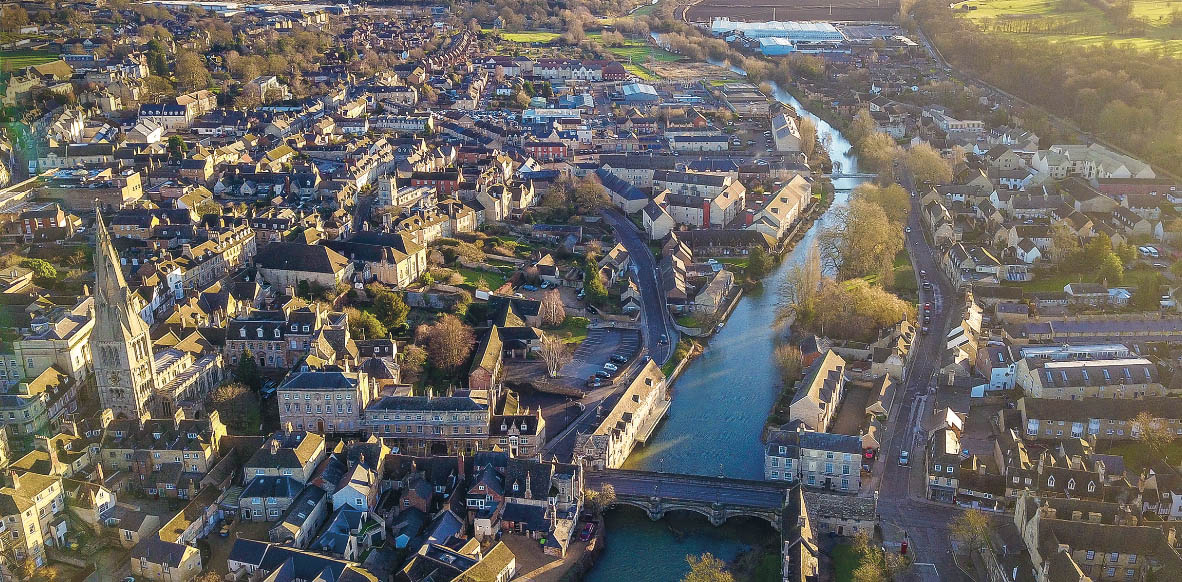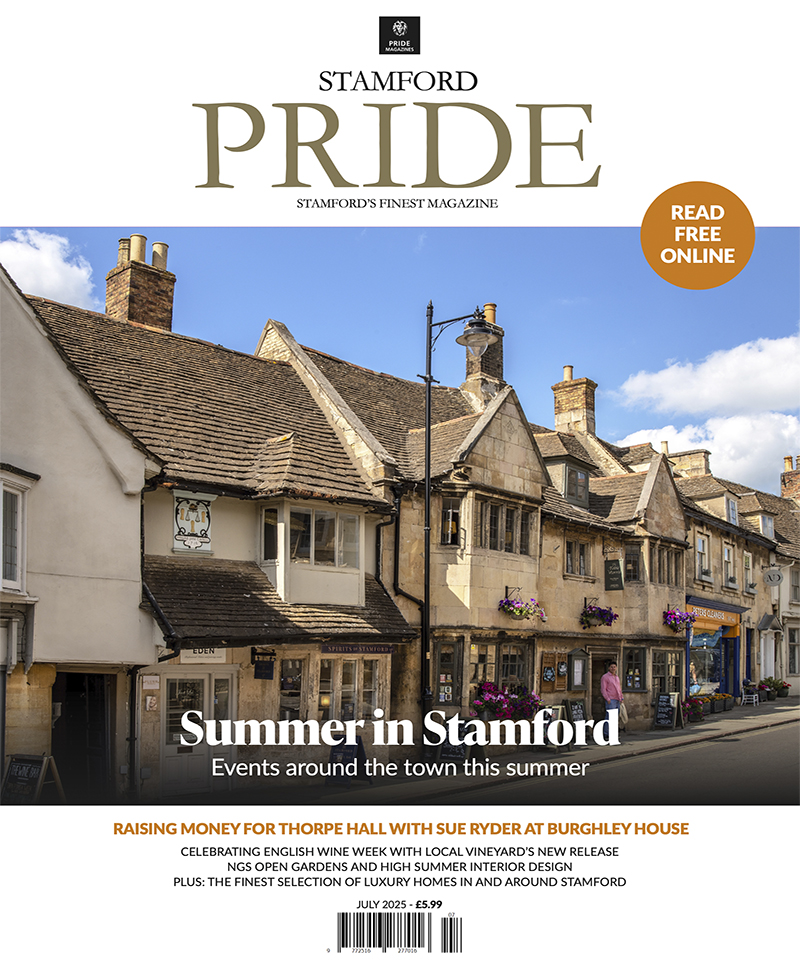
A New Dawn for Stamford
“The Georgian town of Stamford has worked hard
to protect its heritage, to preserve its leafy appearance and its core of independent shops and businesses. That’s why, when many market towns are suffering, stamford is still thriving…”
Georgian rooftops, green open spaces, and a town centre with independent retailers all thriving. It sounds like utopia – albeit an urban utopia – but Stamford is thriving, unlike many other market towns of a similar size.
Why? Historically the town’s position on both the Welland and on the Great North Road, latterly the A1, has ensured it has always been in the right place at the right time, able to capitalise on its historic wool trade, then with the demise of the industry between the 1300s and 1500s, on its role as a coaching town equidistant between York and London.
The Cecil Connection
The beleaguered town was rescued from poverty by philanthropist William Brown and by the Cecil family, the latter merchants from Hertfordshire who found a career in politics, and favour in the Elizabethan court as William Cecil became the queen’s chief advisor.
Fortunes Build on Travel
The silting of the Welland made the fortunes of the town so bad that in 1602 it was excused from paying taxes, and with plague and the civil war ravaging the town it took the increase in coaching trade to renovate the town. The town narrowly missed out on becoming a hub for the railway when the Marquess of Exeter objected to its presence in 1844. The railway also caused a steep decline in coaching trade, too.
Stamford bounced back once again in the late 1800s, and produced machinery, carriages and retained its strong agricultural base, too.
Protecting Its Heritage
The town became the UK’s first conservation area 50 years ago, and it’s perhaps because locals have remained keen to preserve Stamford’s Georgian look and feel that the town is equally keen not to fall victim to an influx of modernising multinational retailers.
There’s still a good mix of independent businesses in the town, providing decent shopping. With low property prices and the availability of smart country homes in the outlying villages, plus the convenient 55 minute London commute, it has latterly become a popular commuter town too, which has brought a fresh influx of wealth into the town as urbanites look to return to ‘the good life’ at the weekend.
An Award Winning Town
The Times Newspaper awarded the town the title of best place to live in the UK back in 2016, and second best place to live in the UK last year. Stamford was praised as being like ‘the Cotswolds, but without the snobs.’
It’s home to no fewer than 11 churches, 30 pubs, 20 restaurants and 10 hotels, not to mention its flagship Horse Trials, which has made the town famous since the 1960s, and contributes £20m to the economy each year with it’s 150,000 visitors.






